When you’re at a formal dinner, business lunch, or even a special family gathering, knowing how to behave at the table is crucial. Among the many dining manners, cutlery etiquette plays a vital role in non-verbal communication.
With just a fork and knife, you can express everything from “I’m taking a short break” to “The meal was excellent”—without speaking a word. These silent cues are especially helpful in fine dining, where interruptions are minimized and professionalism is appreciated.
Understanding Cutlery Positions: A Visual Language at the Table
Let’s break down the universal cutlery signals you can use to communicate effortlessly with your host or the restaurant staff.
START: Ready to Begin
Position: Knife on the right, fork on the left — not touching the plate
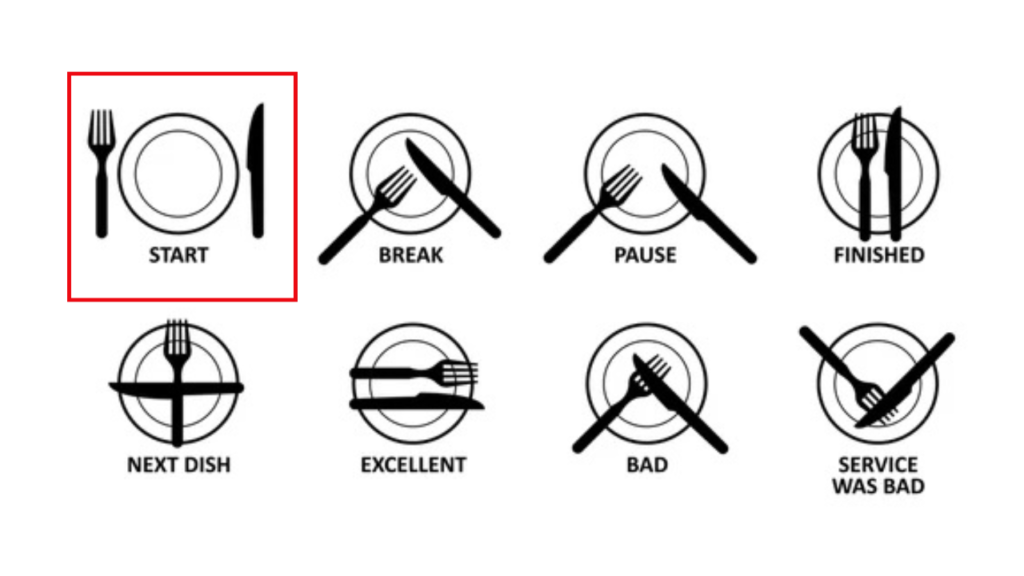
This position shows that you’re waiting to start eating. It’s polite to keep your cutlery placed neatly while others are still being served or if a toast or prayer is about to take place. It also signals good manners and patience.
✨ Did you know? A neatly set table with stylish plates and cutlery leaves a lasting impression. Explore elegant tableware options on davindas.lk.
BREAK: Taking a Short Pause
Position: Fork and knife placed diagonally inward (fork at 8 o’clock, knife at 4 o’clock)
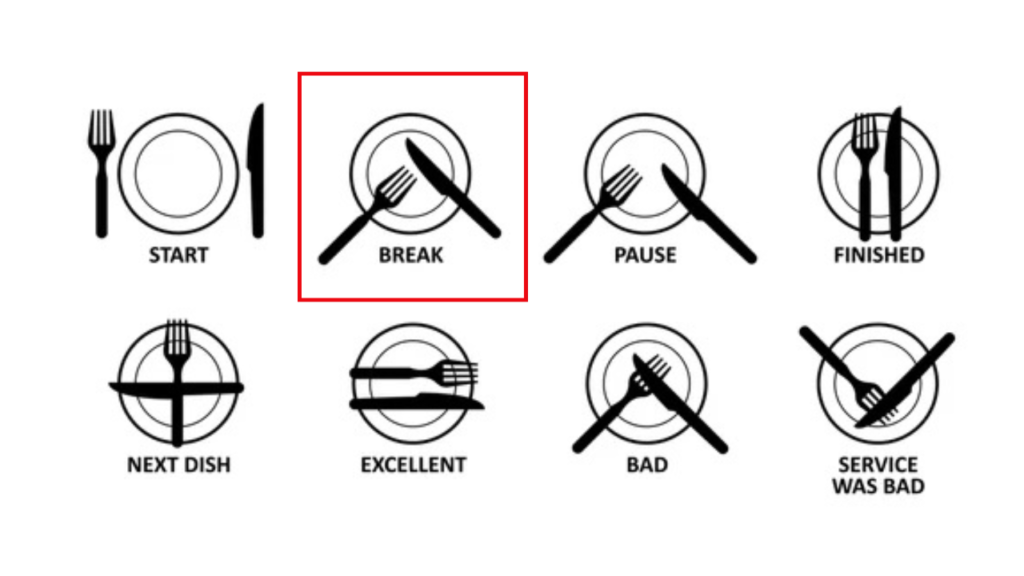
This tells the server: “I’m not finished yet, just pausing.” Whether you’re sipping water, speaking with someone, or just resting, this position makes it clear that your plate should not be cleared.
💡 Pro Tip: Knowing this can save you from that awkward moment when your plate is taken away while you’re still enjoying your meal.
PAUSE: Mid-Conversation or Reflecting
Position: Fork and knife in an open V-shape, tips facing downward
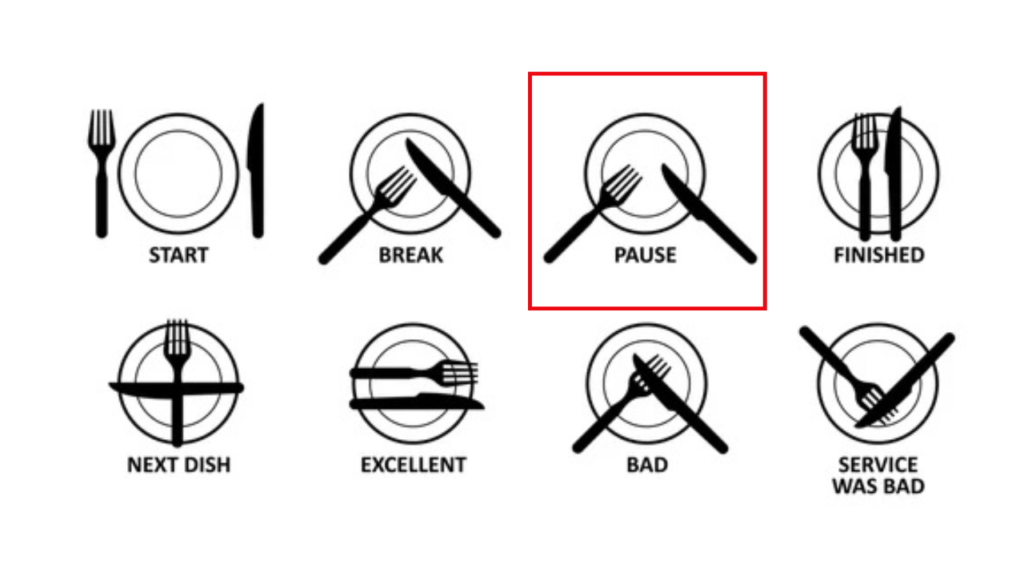
This is often used in between courses or during deep conversation. It conveys a soft pause rather than a break, and waitstaff will understand that you’re still actively eating.
🧠 Etiquette Insight: This position is ideal for formal banquets where multiple courses are served, and you may want to pace your meal thoughtfully.
FINISHED: Done with Your Meal
Position: Fork and knife placed parallel, pointing to 4 o’clock on the plate
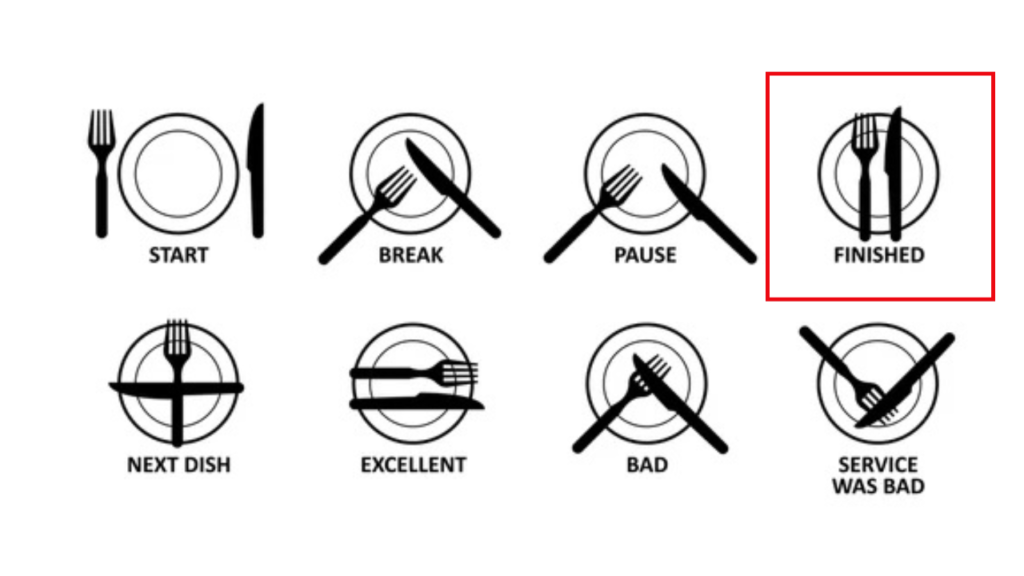
A clean and clear signal that you’ve completed your meal. It allows servers to efficiently clear the table without interrupting conversation.
🎯 Dining Tip: For the best impression, ensure your utensils are neatly aligned—this shows respect for the staff and appreciation for the service.
NEXT DISH: Ready for the Next Course
Position: Fork and knife crossed horizontally across the center of the plate
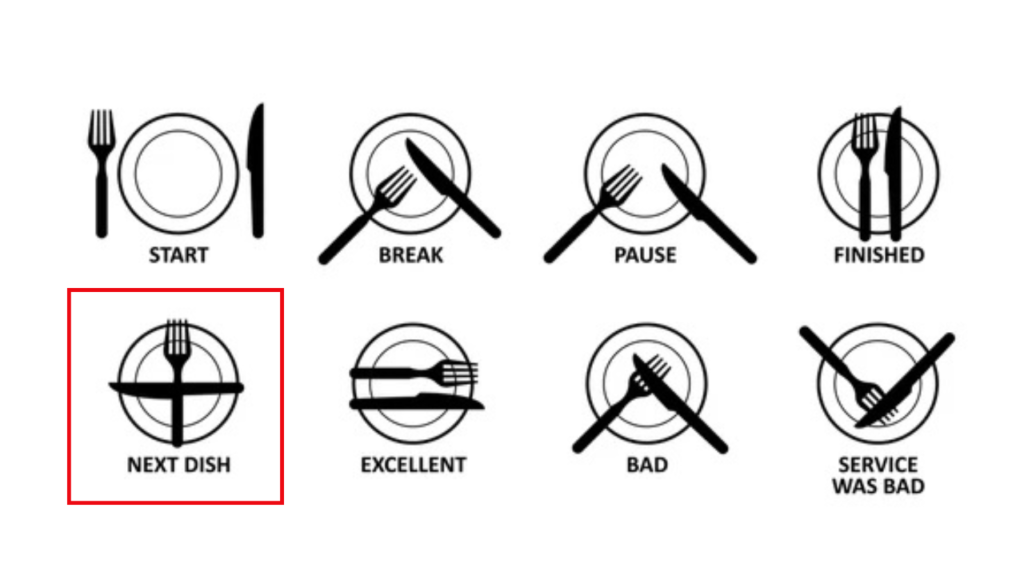
This tells the server you’ve completed your current course and are ready for the next one. It’s commonly used during tasting menus or multi-course dinners.
🍽️ Upgrade Your Hosting Game: Hosting a formal dinner at home? Find luxurious dinner sets and cutlery collections at davindas.lk to impress your guests.
EXCELLENT: Compliment to the Chef
Position: Fork and knife side by side, fork on top of the knife horizontally
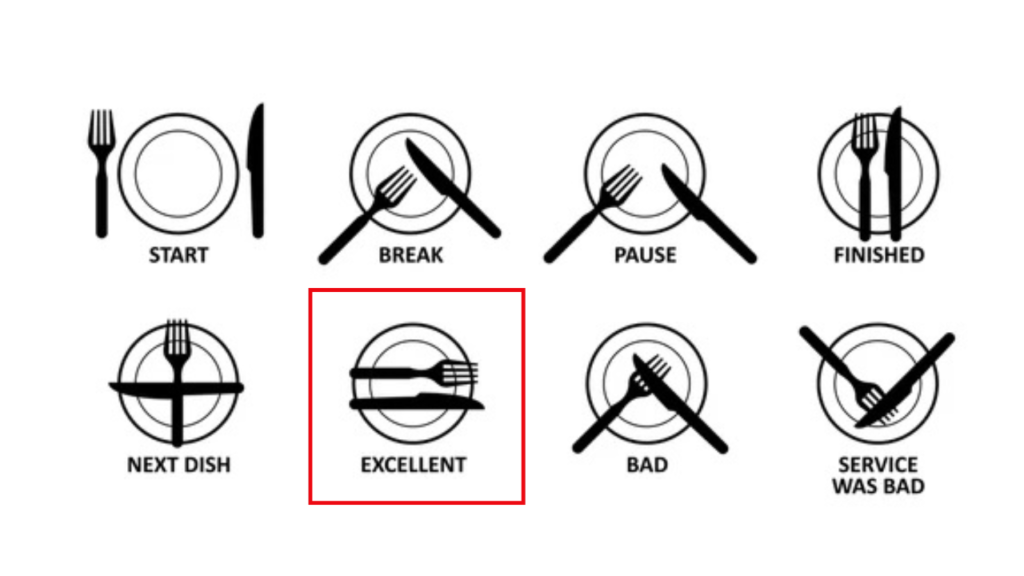
Want to silently praise the kitchen? This classic gesture shows your satisfaction with the meal without uttering a word.
🙌 Etiquette Tip: In some European countries, this gesture is considered an elegant and discreet way of saying “compliments to the chef.”
BAD: Meal Was Unsatisfactory
Position: Fork and knife crossed diagonally in an X shape
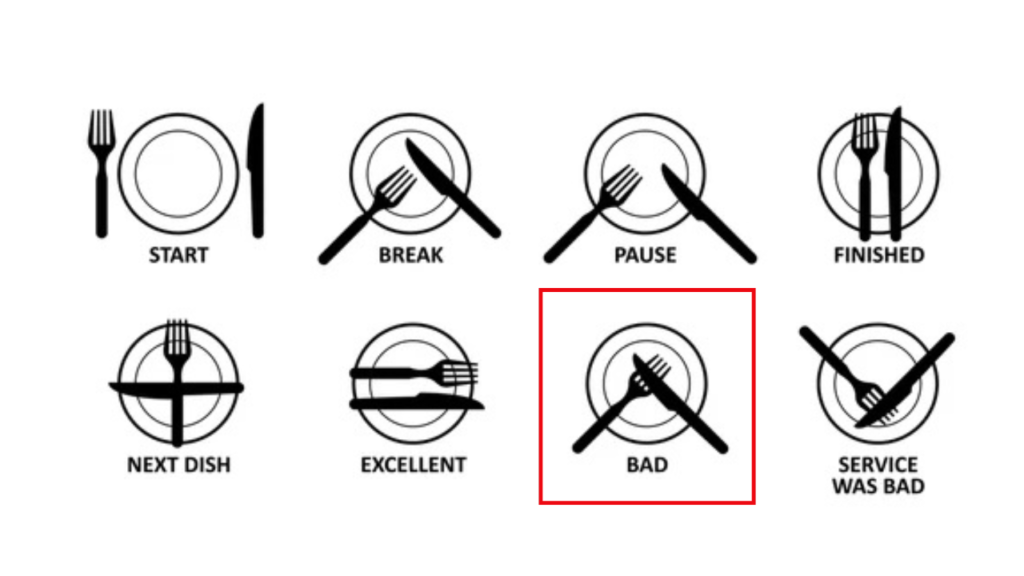
This communicates that the food was not to your liking. Though subtle, it sends a message to the kitchen staff or host that your expectations were not met.
🚨 Note: Use this gesture with caution. It may be appropriate in formal environments where discreet feedback is welcome, but it could be taken harshly in casual or cultural settings.
SERVICE WAS BAD: Strong Disapproval
Position: Fork and knife placed in a sharp X (vertical and horizontal), touching in the center of the plate

This is a powerful, non-verbal way of showing displeasure with the overall service. It’s bold and should only be used in situations where the service was truly poor.
🛑 Cultural Awareness: In many cultures, direct criticism is best delivered politely and verbally. Reserve this gesture for high-end restaurants or when verbal feedback isn’t possible.
Why Cutlery Etiquette Is Still Essential Today
✨ Professionalism at the Table
Whether you’re on a job interview over lunch or networking at a formal dinner, table etiquette can speak volumes about your character and professionalism.
🌍 Universal Language
These cutlery cues are widely recognized across Europe, the U.S., and luxury dining spots worldwide. Knowing them shows you’re culturally aware and well-mannered.
🛎️ Enhancing Dining Experience
Clear signals mean less interruption, better service, and a smoother dining flow. The staff can anticipate your needs efficiently—making your dining experience more pleasant.
Where to Buy Elegant Cutlery and Plates in Sri Lanka?
Looking to level up your table presentation?
Explore premium-quality cutlery sets, stylish dinner plates, and dining accessories at davindas.lk.
- Durable and elegant materials
- Suitable for daily use or formal events
- Trusted by many Sri Lankan households and hospitality brands
🛒 Shop Now: davindas.lk – for timeless dining elegance.
👉 Buy Cutlery
👉 Buy Dinnerware
Final Thoughts
Cutlery etiquette transforms the dining table into a space of silent communication, cultural refinement, and mutual respect. Whether you’re dining in a five-star hotel or hosting friends at home, mastering these fork and knife signals will make you stand out with grace.
🛍️ And don’t forget — the first step to elegant dining starts with quality tableware. Discover the latest collection at davindas.lk and bring class to every meal you serve.
